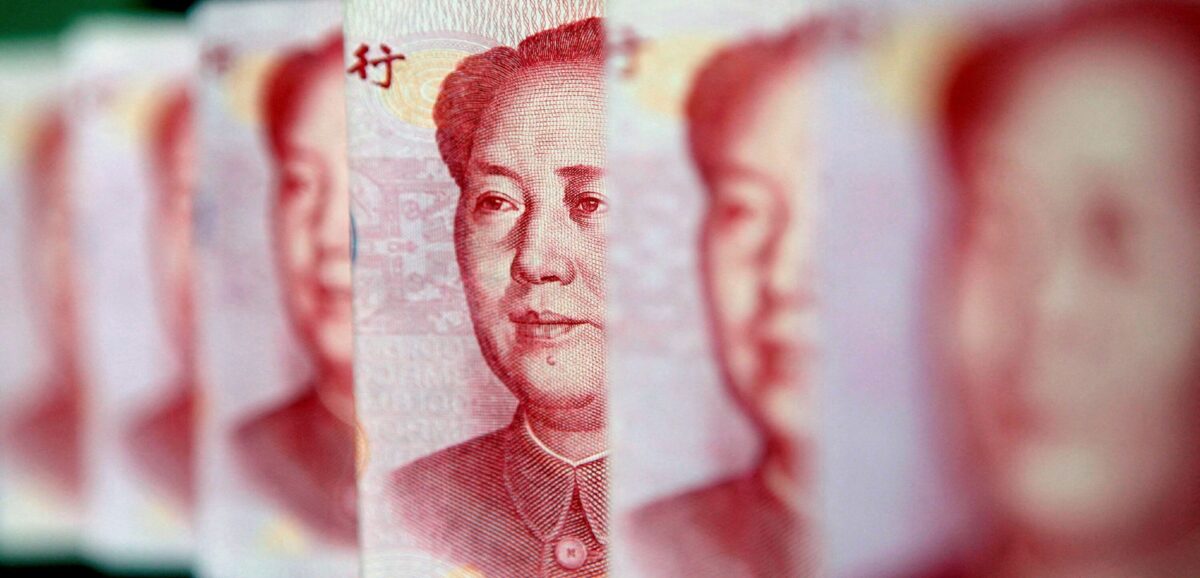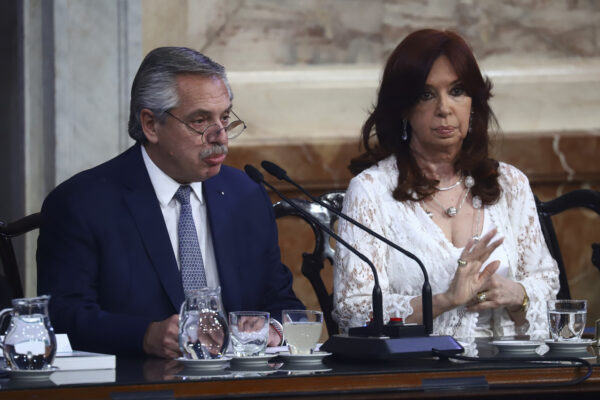


Countries that are joining China and Russia in their de-dollarization campaign could be “acting against their own self-interest,” warned John Kirby, the coordinator for strategic communications at the National Security Council in the White House.
Argentina will pay for imports from China in yuan instead of U.S. dollars to prevent a further decline in the nation’s diminishing dollar reserves, the government announced in a televised broadcast.
Economy Minister Sergio Massa confirmed in an April 26 meeting with Zou Xialoi, China’s ambassador to Argentina, that the South American country would start to pay about $1.04 billion of Chinese goods in yuan this month. Buenos Aires would then complete nearly $800 million in yuan-denominated imports.
According to the economic minister, the agreement would “improve the perspective of Argentina’s net reserves” and allow the government to garner “greater freedom” to “maintain the level of activity, the volume of imports, the pace of trade between Argentina and China, and the levels of economic functioning that Argentina needs.”
Zou told reporters this arrangement will “protect and develop global markets by supporting companies so that they can use local currencies to settle trade.”
Argentine president Alberto Fernández has been accused by his critics of fueling the collapse of the peso against the dollar. Following his election in 2019, there was a massive selloff in government bonds that were later defaulted on. Because his government did not have access to credit markets after the default, the president printed money throughout the coronavirus pandemic to support fiscal stimulus and relief programs.
The Argentine peso stood at 225 to the dollar at the official exchange rate as of April 28. The country’s inflation exceeded 100 percent in March.
Since November 2022, China and Argentina have engaged in multibillion-dollar currency swap agreements. The Argentina central bank noted that this would allow the country to rebuild its foreign currency reserves and cover trade costs and future debt repayments, which was a critical provision of its March 2022 $44.5 billion debt relief deal with the International Monetary Fund (IMF).
China is Argentina’s second-largest trading partner, behind Brazil.
Meanwhile, this comes soon after Brazil announced that it would abandon the U.S. dollar and use the Chinese yuan in bilateral trade, worth an estimated $150 billion per year.
Brazilian president Luiz Inacio Lula da Silva recently lashed out at the dollar hegemony in international trade.
“Why should every country have to be tied to the dollar for trade?… Who decided the dollar would be the [world’s] currency?” Lula said in Shanghai at a ceremony in March.
“Today, countries have to chase after dollars to export, when they could be exporting in their own currencies.”
But are these efforts to internationalize the yuan succeeding?
Data from the State Administration of Foreign Exchange (SAFE) show that the yuan climbed to be the most-used currency for cross-border settlements in March, toppling the greenback. Last month, the yuan was used to settle a record $550 billion in payments, up from $434.5 billion in February.
Still, according to the global banking payments system SWIFT, the U.S. dollar accounted for more than 83 percent of all volumes settled, compared to the yuan’s 4.5 percent.
With the latest developments in the region, there is concern that China is growing its financial footprint in Latin America.
“We are concerned in making sure that that we engage in a meaningful way with all our partners in Latin America, whether it’s on economic issues or security issues,” Kirby told The Epoch Times.
Both the Chinese and the Russians are “trying to peddle their influence in Latin America,” according to Kirby, adding that the United States is not asking countries to pick a side.
“But what we hope they understand is that by partnering with nations like China and Russia, they could be acting against their own self-interest and against their own economic prosperity going forward,” he said.
China’s role in Latin America has been growing since 2000, promising many struggling countries an “economic opportunity,” says Diana Roy, a writer on the region for the Council on Foreign Relations.
In addition to heavy investment in the continent’s energy and infrastructure, Beijing provided the region with loans, medical equipment, and vaccine doses during the coronavirus pandemic. Over the last decade, China has also bolstered its cultural, diplomatic, and military affairs in Latin America.
In 2021, Chinese trade in the region totaled $450 billion, and experts predict it could top $700 billion by 2035.
But fears of “debt traps” and “economic dependency” have been growing in recent years, Roy says.
“While Chinese loans often have fewer conditions attached, dependence on them can push economically unstable countries such as Venezuela into what critics call ‘debt traps’ that could result in default,” she wrote. “Critics also say that Chinese companies bring lower environmental and labor standards, and they warn that China’s growing control over critical infrastructure such as energy grids poses national security risks. There are also fears of economic dependency in countries such as Chile, which sent nearly 39 percent of its total exports to China in 2020.”
This has not stopped the United States from working with regional leaders.
Kirby noted that officials were in discussions with several Latin American leaders, including Venezuela and Cuba, pertaining to democratic institutions and immigration issues.

